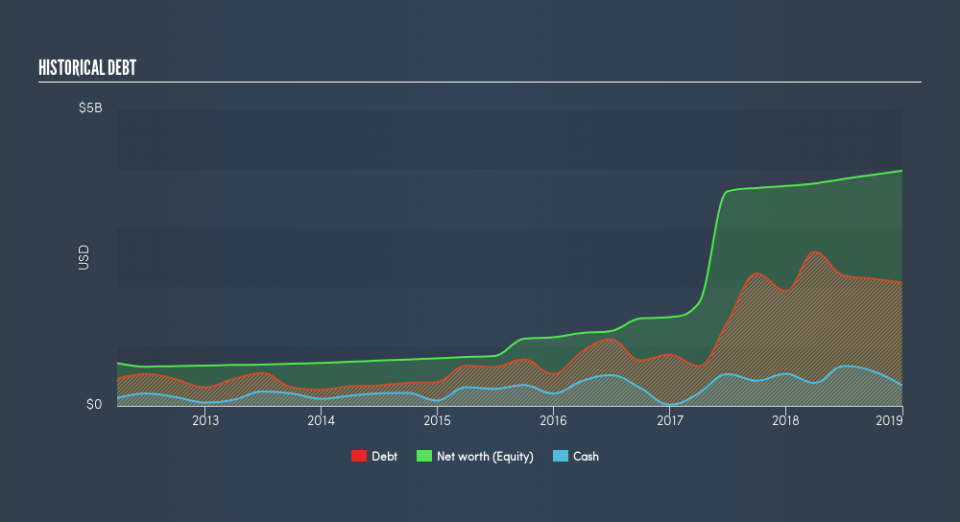What You Should Know About Pinnacle Financial Partners, Inc.’s (NASDAQ:PNFP) Risks

The banking sector has been experiencing growth as a result of improving credit quality from post-GFC recovery. As a small-cap bank with a market capitalisation of US$4.5b, Pinnacle Financial Partners, Inc.’s (NASDAQ:PNFP) profit and value are directly affected by economic growth. This is because borrowers’ demand for, and ability to repay, their loans depend on the stability of their salaries and interest rates. Risk associated with repayment is measured by bad debt which is written off as an expense, impacting Pinnacle Financial Partners’s bottom line. Today we will analyse Pinnacle Financial Partners’s level of bad debt and liabilities in order to understand the risk involved with investing in the bank.
See our latest analysis for Pinnacle Financial Partners
How Good Is Pinnacle Financial Partners At Forecasting Its Risks?
The ability for Pinnacle Financial Partners to forecast and provision for its bad loans accurately serves as an indication for the bank’s understanding of its own level of risk. If it writes off more than 100% of the bad debt it provisioned for, then it has poorly anticipated the factors that may have contributed to a higher bad loan level which begs the question – does Pinnacle Financial Partners understand its own risk?. Pinnacle Financial Partners’s low non-performing loan allowance to non-performing loan ratio of 95.15% means the bank has under-provisioned by -4.85%, indicating either an unexpected one-off occurrence with defaults or poor bad debt provisioning. We do note though, that many banks don’t require 100% coverage of their non-performing loans, as banks often can seize collateral to cover their losses on bad loans.
How Much Risk Is Too Much?
If Pinnacle Financial Partners does not engage in overly risky lending practices, it is considered to be in relatively better financial shape. Generally, loans that are “bad” and cannot be recovered by the bank should make up less than 3% of its total loans. Loans are written off as expenses when they are not repaid, which comes directly out of Pinnacle Financial Partners’s profit. Since bad loans only make up an insignificant 0.50% of its total assets, the bank may have very strict risk management – or perhaps the risks in its portfolio have not eventuated yet.
Is There Enough Safe Form Of Borrowing?


Pinnacle Financial Partners profits from lending out its various forms of borrowings and charging interest rates. Deposits from customers tend to carry the lowest risk due to the relatively stable interest rate and amount available. The general rule is the higher level of deposits a bank holds, the less risky it is considered to be. Pinnacle Financial Partners’s total deposit level of 89% of its total liabilities is very high and is well-above the sensible level of 50% for financial institutions. This may mean the bank is too cautious with its level of its safer form of borrowing and has plenty of headroom to take on risker forms of liability.
Next Steps:
The recent acquisition is expected to bring more opportunities for PNFP, which in turn should lead to stronger growth. I would stay up-to-date on how this decision will affect the future of the business in terms of earnings growth and financial health. The list below is my go-to checks for PNFP. I use Simply Wall St’s platform to keep informed about any changes in the company and market sentiment, and also use their data as the basis for my articles.
Future Outlook: What are well-informed industry analysts predicting for PNFP’s future growth? Take a look at our free research report of analyst consensus for PNFP’s outlook.
Valuation: What is PNFP worth today? Has the future growth potential already been factored into the price? The intrinsic value infographic in our free research report helps visualize whether PNFP is currently mispriced by the market.
Other High-Performing Stocks: Are there other stocks that provide better prospects with proven track records? Explore our free list of these great stocks here.
We aim to bring you long-term focused research analysis driven by fundamental data. Note that our analysis may not factor in the latest price-sensitive company announcements or qualitative material.
If you spot an error that warrants correction, please contact the editor at editorial-team@simplywallst.com. This article by Simply Wall St is general in nature. It does not constitute a recommendation to buy or sell any stock, and does not take account of your objectives, or your financial situation. Simply Wall St has no position in the stocks mentioned. Thank you for reading.

